Mark Cavendish interview: centre of attention
Cycle Sport was the first magazine to run an in-depth interview with BBC Sports Personality of the Year Mark Cavendish following his world championships win in Copenhagen. Here is the feature, from Cycle Sport December.
Words by Lionel Birnie
Portrait by Richard Baybutt, race photography by Graham Watson
Friday December 23, 2011
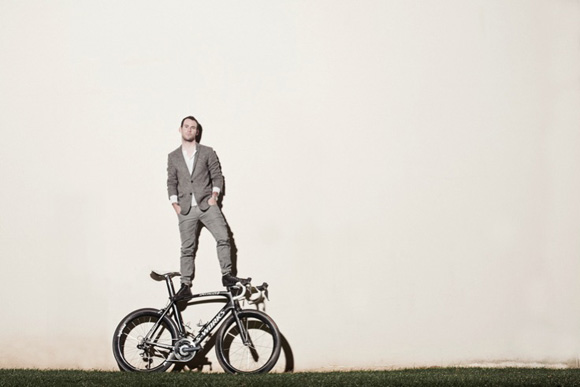
As he speaks, Mark Cavendish sub-consciously wrinkles and then smooths the rainbow jersey that is draped over the arm of the sofa. It is Saturday evening, the night before the final French classic of the season, Paris-Tours, and we’re in the lounge of a Novotel hotel in Chartres, to the south west of the capital. The way his fingers brush and tease the fabric is a little like the way a child might play with his security blanket, every touch reassuring him it’s still there.
Two weeks have passed since Cavendish won the World Championships in Copenhagen. Paris-Tours will be his first race in the rainbow jersey and this weekend will give him an idea of what life as world champion is going to be like. Already he can tell it is going to be even more hectic than before. He’s used to being in the spotlight. Winning five stages of the Tour de France meant that for almost a quarter of the race he was the man in demand. The podium presentations, the television interviews, the press, the camera flashes going off in his face, dozens of requests for autographs.
That is the double-edged reward for winning. However, being a sprinter, the chaos calms down a bit when the stage races meet the mountains and he is no longer centre stage. There are still autograph hunters and photograph requests but the space opens up around him and he can at least move without having to wheel his bike over anyone’s foot.
Get The Leadout Newsletter
The latest race content, interviews, features, reviews and expert buying guides, direct to your inbox!
But now, as world champion, every time he appears in public will be like that. The jersey attracts people like moths to a flame.
He’s only been at the hotel a few hours, having arrived a day after his HTC-Highroad team-mates because of other commitments. Every time he’s ventured from his room journalists and fans have been waiting. The hotel lobby has been stalked all day by reporters, television crews, teenagers in cycling jerseys with autograph books and pens at the ready, and the ubiquitous middle-aged man with a scrapbook and team issue postcards, arranged in alphabetical order, no doubt.
Before dinner, Cavendish spends an hour and a half granting a handful of the many requests for his time. He does a few television interviews, accepts an award from the Belgian newspaper Het Nieuwsblad, which has made him international Flandrian of the year, a very prestigious honour, for the second time. He then sits down to talk to just two print publications. Cycle Sport is one of them.
We’ve been told he has refused every request for a photograph but as out conversation ends, I explain that our photographer has set something up outside that will look great and it’ll only take a couple of minutes. “No, I’m not doing any photos today.”
I show him a picture on my iPhone of what it’ll look like. He glances at it and says: “I don’t want to get changed.”
We don’t want you in your cycling kit, we want you as you are. He’s dressed in a grey jacket with the sleeves pushed up to reveal an expensive-looking watch, with a collarless white shirt and grey jeans tucked into the top of a smart part of black leather boots. The outfit is a bit too Miami Vice for my taste but it’s got just the right amount of an Eighties retro feel to fit seamlessly onto the pages of Esquire or GQ. He looks cool without being self-conscious.
“Kristy,” he says to HTC-Highroad’s press officer, Kristy Scrymgeour. “I’m going to do this quick photo, look after me jersey.”
Then he says to me: “Where is it? I don’t have to walk through reception do I?
For a moment, his reluctance to walk through the most public area of the hotel, where it seems everyone is sitting waiting for a chance to approach him, threatens to scupper the deal. It’ll be fine, I say, just pretend we’re in conversation.
As we walk, Cavendish doesn’t talk. He just walks with his gaze fixed on an interterminate point in the middle distance. He’s avoiding eye contact, wary of the inevitable approach. It’s easy for those of us who do not have to cope with this level of attention to overlook what it means to be public property. What’s the big deal about someone asking for a photo or an autograph, it only takes a second? What’s the big deal about politely declining an interview, they’ll get over it? But what is it like when those requests come over and over and don’t stop? At the airport on the flight from London to Chartres. At the airport in Chartres. In the hotel lobby. In every hotel lobby. At the start of the race. At the start of every race. That’s what being world champion means.
Outside it is cold and dark. I’m shivering and my jacket is thicker than Cavendish’s. Our photographer has set the picture up brilliantly. The lights are in place, the bike is ready. All Cavendish has to do is climb up on it, balance with his feet on the top tube and handlebars and pose.
Kristy looks nervous, despite the fact that after this week, with the HTC-Highroad team evaporating, Cavendish will cease to be her responsibility.
If this goes wrong and he falls, we’re all in a lot of trouble, I half-joke.
Instinctively, Cavendish understands the idea behind the photoshoot in a way that few professional sportspeople would. Sports people play sport. When cast in the role of style or cultural icon, few know what to do. It comes naturally to David Beckham and a handful of others. Modelling, assuming a persona, playing a part, projecting a feeling or an idea to the viewer, these are skills you expect of actors and musicians.
But Cavendish gets it. He strikes up a relationship with the camera. It is that ability that has already elevated him above many of his contemporaries and made him an attractive client for the Wasserman Media Group to represent. For Wasserman, think Jerry Maguire. The firm acts for some of the biggest sports stars in the world.
As Cavendish hops down with a nimble, light-footed grace that perhaps owes much to spending his teenage years as a dancer, I hold my breath, imagining we’re going to have to explain to Dave Brailsford why he’s missed six weeks training with a badly sprained ankle.
I ask Kristy whether she’ll miss working with Cavendish. She smiles a smile that says yes and, occasionally, no. “He can be a joy… or he can be a challenge.”
Before we know it, Cavendish has disappeared inside, to run the gauntlet in reception.
**
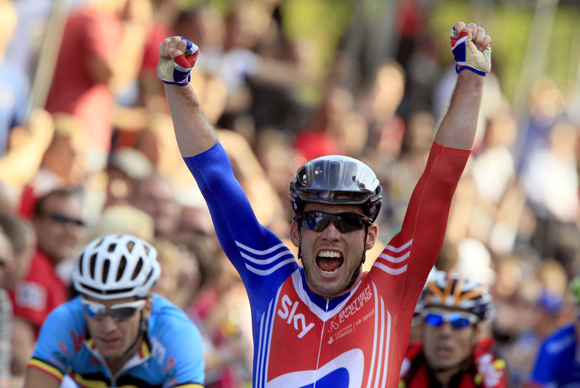
Winning the World Championship was not an accident. It was planned and plotted with the precision of a heist on a Las Vegas casino. The only difference being that everyone knew the plan. British Cycling may as well have published their tactics online a fortnight before the race for all that their strategy surprised the opposition. But knowing what someone is going to do and preventing them from doing it are two different things.
Rod Ellingworth never reached the professional ranks. He didn’t ride the Tour or the Giro. The furthest he got was racing as an amateur in France, for the UV Aube club. But he has a racer’s heart and a work ethic that inspires others. He understands the mechanics of bike racing better than some who have spent a decade in the professional peloton. And he is not a linear thinker. He doesn’t believe something must be done the way it’s always been done until he’s exhausted his search for a better alternative.
Ellingworth created the British Cycling academy in late 2003, after pitching the idea to Peter Keen, Dave Brailsford and the other key figures at Manchester velodrome. With the Athens Olympics a few months away, Keen was concerned it would divert attention and resources away from the important business of winning medals. Ellingworth told them to give him a modest budget, around £100,000, and promised they would not hear a peep out of him until after the Games. Then, if they didn’t like what he’d created, they could scrap it.
The tales of Ellingworth’s regime are becoming legendary. He took on the combined role of sergeant major, foster father, older brother and best mate. He created a timetable that immersed the young riders in cycling without making them one-dimensional. He made them take responsibility for themselves and their equipment. He taught them some tough but vital lessons and he gave them a grounding that would make them the best bike riders they could possibly be, as long as they put the work in.
Ellingworth wanted to create bike racers. He talks of “getting out on the pushie” (push bike), of “getting stuck into the bike race” and of “skills and drills”. Everything they did served a purpose – to prepare riders for the life of a professional. Ten hour days, laps of a ‘punishment circuit’ for discretions major and minor, French lessons, bike maintenance, Madison training on the track. On trips to races, he would get the riders to decide what time they needed to leave to be on time. He’d get them to read the map. They would discuss the tactics and would have a say in setting the plan for the race. No one was spoon-fed anything. “I’d set them assignments like write a 1,000-word essay on Madison tactics or the history of the Tour of Flanders, or whatever it was,” says Ellingworth. “I wasn’t interested in the content. I didn’t read them all but the task was to write 1,000 words. Most of them did it on a computer so it was easy for me to do the word count. Mark wrote his out long hand. Maybe he thought I wouldn’t count every word but it came up short and I had a right go at him. He took it well, he didn’t complain because he understood he’d not done what he’d been asked.”
Of the British Cycling academy’s initial intake of six riders, three have made it. Cavendish, the Olympic team pursuit champion Ed Clancy and Matt Brammeier, who now races for HTC-Highroad and Ireland, is Irish champion and is heading to Quick Step next season.
Cavendish, who gave up his job in a bank to join the academy, arrived overweight and struggled terribly early on, to the point where it looked like he might not survive. British Cycling had been reluctant to take him on in the first place because he didn’t produce the required numbers in the various laboratory tests. But he was a bike racer and he won more often than many of his contemporaries because of his sprint. Progress was rapid. He learned like a sponge. In April 2004, just four months after he’d been struggling over every hill within 80 miles of Manchester, he won a stage of the Girvan, a tough race for amateurs in Scotland. He was dropped on the final climb but fought back on. Ellingworth did not give him any help at all. There was no sitting on the bumper of the team car, no sticky bottle. Cavendish hauled himself back to the leaders and won the sprint.
**
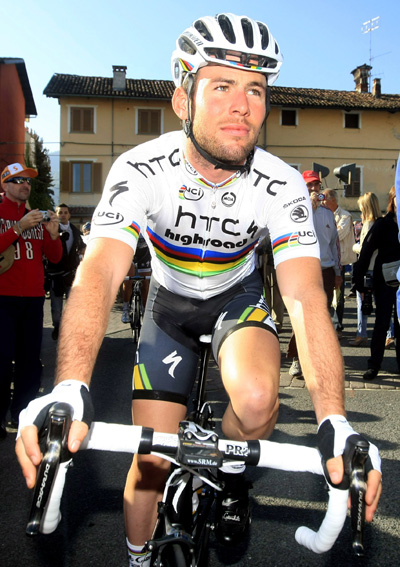
After dominating the Olympic Games in Beijing in 2008, Brailsford and Ellingworth turned their attention to the men’s elite road race at the World Championships. No British rider had come close to winning it since Tom Simpson’s victory in 1965. Dominance on the track was one thing but the critics were quick to point out that road racing is a different animal.
Ellingworth devised Project Rainbow Jersey. The goal was to win the Worlds. Each barrier to British success was identified and slowly overcome. By spring of 2009, Cavendish had proved that he could win a Monument. Everyone said it would be too long for him, that the pace on the Cipressa and Poggio would be too hot. But he won Milan-San Remo with that desperate lunge for the line to pip Heinrich Haussler. That convinced Ellingworth that Cavendish could win the Worlds on the right course. Mendrisio in 2009 was ruled out as too hilly. Melbourne in 2010 was a possiblility but it might still be too lumpy and a year too soon. But Copenhagen, now that was an opportunity.
The other major issue for Great Britain was that unless they could qualify enough places they would start the road race with fewer riders than Italy, Belgium, Australia and the other nations.
So Ellingworth gathered together all the British professional riders at a number of short training camps during the season. They were a chance to get together, build a team, embrace the idea of winning the Worlds and prepare their two-pronged strategy or securing enough places in the race and planning their tactics for the race.
When we sit down to talk, Cavendish is quick to counter the idea that Project Rainbow Jersey was built around him. “It was built around the idea of creating a team that could win the Worlds,” he says. “I just happened to be the one to cross the line first. We knew about the course. We knew it would be a sprint. No, we knew we could make it a sprint. It wasn’t a case of going there and waiting for the sprint to happen.
“Rod pulled the team together and did an incredible job. Three years ago everyone was riding on different teams. There were some older guys, some younger guys. Some guys got on well together, some people didn’t get on. Rod made everyone believe in something.”
Of the seven riders who rode for Cavendish in Copenhagen, six rode for Team Sky (Bradley Wiggins, Steve Cummings, Chris Froome, Ian Stannard, Geraint Thomas and Jeremy Hunt). Only David Millar (Garmin) and Cavendish rode for other teams.
“The younger guys have grown up together and have come through the same system together. I think the key thing is that everyone on that team just loves racing their bikes but there’s no real ego. Well, every bike rider has got an ego but being British we’re quite lucky. We’re a proud nation and wearing that British jersey is something we’re all proud to do.”
Cavendish is always quick to thank his team-mates for their efforts. The cynic might suggest it’s simply a good way to ensure they continue to help him but if it were a calculated, insincere tactic people would surely have seen through it by now.
But he is also aware that he is the figurehead, the one who bears the weight of expectation and the takes the flak if it goes wrong. “I am the one who gets to wear this jersey,” he picks up the rainbow jersey. “And if it goes wrong I get the brunt of it. That’s why it’s worth taking the risks and the pressure.
“There were 14 of us who met at a training camp before the National Championships. We sat down and went through different scenerios of the race and how we should attack it. It wasn’t just the riders who rode the race, it was everyone. They all brought something extra to it, a way of looking at the course or thinking about how it might go, whether we’d need two guys to ride at this point of the race, or how we’d keep it at a high tempo at the end.
“In the end the eight-man team kind of picked itself but Adam Blythe, for instance, he didn’t ride but he won one UCI World Tour point. That meant we got eight guys in the race instead of seven. That one point by that one guy made a massive difference. Most people won’t realise that. The first missed call I had when I turned my phone on after the Worlds was from Dan Lloyd. Everyone deserves a bit of this jersey.”
**
Cavendish arrived at the Novotel in Chartres early on Saturday afternoon dressed in a casual pair of grey Nike jogging pants, a blue Nike sweatshirt and old school Nike trainers. He comes over to say hello. How does it feel to be world champion?
“I don’t know yet, I’ve not raced in the jersey.”
It’s getting on for three o’clock by the time he emerges from the hotel in his rainbow stripes for a short, solo training ride. Minutes earlier he Tweeted a picture of himself in the kit with the words “A dream come true.”
Rob Hayles tells a nice story about Cavendish’s first world title, on the track in Los Angeles in 2005. Hayles was supposed to ride the Madison with Geraint Thomas but the Welshman crashed heavily in training a couple of months before the Worlds and had to have his spleen removed.
Cavendish rode the scratch race in Los Angeles and finished fourth, just missing out on a medal behind Alex Rasmussen, Greg Henderson and Matthew Gilmore. He was disappointed, particularly as the British squad was on a high that week. Hayles had been part of the first team pursuit squad to win the world title.
Hayles and Cavendish had never ridden a Madison together before. “The first handsling we did was on about lap three,” Hayles says. Hayles was tired after the team pursuit but as they got up to leaving the changing rooms, he slapped Cavendish on the shoulder and said: “Come on, let’s go and get you a stripey jersey then.”
The British pair didn’t win a point all night but they gained a lap, which was enough to win the race. Afterwards, they were interviewed by the BBC, and as the 19-year-old Cavendish told the reporter that winning the rainbow jersey was something he’d been waiting for “all his life”, Hayles couldn’t help but smile.
Cavendish won a second Madison title in Manchester in 2008, partnering Wiggins to an extraordinarily comprehensive victory. Their dominance was such that they were hot favourites for gold in Beijing. However, Wiggins was on his last legs after gruelling team and individual pursuit campaigns. Cavendish was the only British track rider to leave the Games without a medal. He’d quit the Tour de France early for this. The pain burned for quite a while over that.
He rolls out of the hotel car park for his training ride, followed by two cars and L’Equipe’s photographer on a motorbike. The sky over Chartres is dark and moody but the rainbow shines brilliantly. Throughout his ride, he is photographed and filmed from the cars and the motorbike.
He overtakes two boys on mountain bikes, who do a double-take as he goes past. Later a club cyclist tries to stay on his wheel, to no avail. Cavendish is cruising along, in no difficulty whatsoever. The club rider is hunched over the bike, rocking from side to side. Eventually he concedes defeat and sits up.
A group of club riders comes the other way. They spot the HTC-Highroad that’s pacing him first and wave. Then they spot the rainbow bands and almost crash into each other as they slam on the brakes to get a better look. They cheer and wave. One man takes his hands off the bars and applauds as Cavendish rides past.
**
It’s early evening when Cavendish walks down into reception. A film crew has lit the foyer and Cavendish is asked to stand in the spotlight. Guy Fransen, editor of Sportwereld presents him with an attractive bronze sculptor. Cavendish is international Flandrian of the year. He has a look of boyish innocence and genuinely touched as he accepts the award and listens to the plaudits he must know are true. It’s a far cry from the post-race scowl, or the withering look he sometimes gives in press conferences, a look that suggests he thinks everyone in the room bar himself is a blithering idiot.
“Thank you very, very much,” he says to Fransen. “It’s one of the biggest honours I’ve received off the bike. To be recognised by the Belgian people… for me it’s the heart of cycling and it’s my favourite place to race.”
Sportwereld is the sport’s section of Het Nieuwsblad, the newspaper that created the Tour of Flanders and still runs it to this day. Fransen has presented awards to everyone from Eddy Merckx down. He explains that the Belgian people love Cavendish because he ‘has the grinta’. “He is so fast in the sprint you shake your head and you rub your eyes,” he says. “Did he really just do that? At the World Championships the gap was not as big as on the Champs-Elysées but did you see how far back he came from? And Milan-San Remo… whooosh…. like that. He is also a student of the sport. That is why the Belgian people respect him.”
For all that winning matters deeply to him, Cavendish is a romantic at heart. He understands the sport’s traditions. When he first turned pro, he and Ellingworth wrote a list of the races and honours he wanted to win. World Championships. Green jersey. Tour, stages, Giro stages, Vuelta stages. Points jersey in the Giro. Milan-San Remo. Ghent-Wevelgem.
During our conversation we talk about the rainbow jersey and what it means. I tell him that when I was a child, my mum knitted me a jumper that looked just like it, because you couldn’t buy them in the shops. I tell him how I obsessively checked to make sure she knitted the five rings of colour in the correct order. As soon as I start telling Cavendish this, I begin to regret it until his eyes light up. “Have you still got it? That’s one thing I’d love, a plain woollen version.
“There’s something about these solid bands,” he says. “It’s every bike rider’s dream. It is arguable what’s bigger – the yellow jersey or the Worlds but I can’t win the yellow jersey at the Tour so this is the biggest thing I can get.
“When I crossed the line… you remember when I won my first Tour stage in Chateauroux and I did that celebration. I didn’t plan it but I just touched my head with both hands. It was metaphorically like ‘Wow, I can’t believe what I’ve just done.’ It was the same. I thought ‘Oh my god, I’ve just won the World Championships.’ I never normally do that. Usually I just want to cross the line first, it’s my job, you know, but Chateauroux and Copenhagen are the only two times I’ve had that moment where I’ve sort of realised what I’ve done.”
After the World Championships he spent a week appearing on television and radio, explaining the importance of the rainbow jersey to a wider audience. He also attended a gala dinner with many of the great and good of British Olympic sport and went with his girlfriend Peta Todd to watch the singer Rihanna in concert at the O2 arena in London.
“I think if I want to raise the profile of the sport in Britain, the last few weeks were crucial,” he says. “There were a lot of people who were interested, a lot of people watched the race and now a lot more people know what these stripes mean.”
Now he wants to honour the jersey. “It comes with responsibility. I want to do it proud. You know me, I don’t look back at what I’ve done. It’s not like I’ll be riding round thinking I don’t need to do anything for a year. Look at Thor [Hushovd]. He was a worthy wearer of the jersey and I want to do the same.”
But he knows that being world champion will not win over all his critics. He accepts it might, in fact, attract more.
“You’ll never prove everyone wrong,” he says. “I was talking to my soigneur and he said about people always saying I hold onto cars, that I shut them up because I won the Worlds but it won’t shut everyone up.
“When they said you couldn’t win Milan-San Remo but you did it was still blah, blah, blah. You win the green jersey, blah blah blah. He’s holding onto cars, blah, blah, blah. Everyone’s tried to say something but I have got this jersey now, I don’t think there’s any doubt about my ability.
“I guarantee you this… It’s the same people who say before the race that the course is too hard or that Cavendish can’t win an uphill sprint who say after the race that the course must’ve been too easy. You can’t please everyone. That’s part and parcel of being a sportsman. Some people will like you, some people will hate you. I’ve always said, as long as the people who are important to me don’t doubt me, that’s what counts.”
**
In the days leading up to the road race in Copenhagen, Cavendish looked uncharacteristically nervous. The fact that there might not be another opportunity to win the world title for five, six or seven years was obvious. Then Britain’s Lucy Garner won the junior women’s road race.
“We did a big training ride that day and Rod stuck his head out of the car window and said one of the junior girls had won. We got back from the ride and I was in the car park chatting to [Thomas] Löfkvist and, as usual, tinkering with me bike. I saw her get off the minibus in the rainbow jersey and I stood there and gave her a round of applause. It was impressive to see.”
Great Britain made it look so easy in Copenhagen. The biggest question in the race’s post-mortem was why didn’t someone try to stop them? Why did the other nations seemingly sleepwalk into a sprint finish? The only explanation is that they couldn’t do anything about it. The pace set by Wiggins on the last lap was so fierce no one could break away.
For Cavendish the joy of winning was that they identified the potential problems, eliminated many of them and body-swerved the rest.
“Normally, if you do everything right you won’t fail. Most races are so regimented but the Worlds is a complete… not a lottery, but it’s a more open race. All you can do is fuck up. You can’t stick to a plan because anything can happen.”
Cavendish’s strategy was simple but clever. The British team rode at or near the front for almost the entire race. Every time they hit the only serious hill on the course, Cavendish and Jeremy Hunt would stick it in the little ring and drift backwards, saving their legs. “Even though you are eight men back you are still using a lot of energy staying there,” he says. “Every time on the climb, Jez and I sat up and drifted back. It did two things: it saved energy on the climb but also the only real headwind section was after the climb so I was nicely back in the bunch for the headwind, then when we changed direction, Jez took me back up to the front. We did that every lap until eight to go. We planned to do it until six to go, which was 90 kilometres to go, but then they all started attacking.”
Like all of significant his sprint finishes, Cavendish has almost complete recall of every subtle movement. Before arriving in Copenhagen, he thought the ideal place to be around the final corner was third or fourth wheel. Having seen the other races unfold, they realised he needed to be further back, around eighth or tenth.
“Watching the other races convinced us,” he says. “We knew it would be a sprint, it’s just that you’re sprinting at 56 kilometres an hour instead of 76. It was a hard finish, it was pretty steep uphill but it was also a wide road. You lose a lot of speed on the uphill and I realised that no matter how fast you were going, if you went early, people were going to come from behind.
“But it’s not just about positioning. You have to be on the right wheel. That’s why, if you watch it, you’ll see I let Gossy [Matt Goss] go through on the last corner. Like, I boxed Gossy off his team-mate’s wheel with 1,300 to go but I knew he’d come back at me round the last corner. I knew he’d try to come underneath me and I waited for it because I didn’t want anyone fast behind me. I let him come by so I could be on his wheel. I wanted to be on him, not the other way round.
“It takes patience to do that. It takes balls to go round the last corner of a race and allow yourself to lose positions. But in the finishing straight the wind was coming from back right so I knew the peloton was going to go left. We didn’t know that until we were in the race but the wind is absolutely crucial. I am giving away a bit more than I should here but I think about the wind so much. I knew the peloton would go left so it would open up on the right. That’s why I came up the right side of the road.
“But it didn’t go left as early as I thought it would, which is why I got boxed. I didn’t panic but I did think ‘fuck’ when I got boxed. I expected it to go left so I could use that as a lead-out but it stayed. Ideally I wanted to go with 150 metres to go but the gap opened with 200 to go and I knew I had to go then or the chance might be gone.”
**
Cavendish once told Cycle Sport that he’d win Paris-Tours four times in his career (one more than his sprint guru Erik Zabel) but that was a few years ago. The race has slipped down the list of priorities a little and after two hectic weeks he was only likely to have a chance if the race panned out perfectly.
In Voves, the tiny village that hosted the start of this year’s race, Cavendish found how concentrated the spotlight can be. There are many more fans and journalists at the Tour de France, of course, but here all the attention was intensely focused on one man.
Before Cavendish emerged from HTC’s bus, Brian Holm’s usually placid, reserved voice is heard raised. “Two days before Paris-Tours and you’re at a Britney Spears concert? Do you think Francesco Moser would’ve done that?”
More than likely it’s a last-minute attempt at reverse psychology. Holm knows that Cavendish performs best when he’s a little angry, when he feels he has a point to prove. Deliberately mistaking Rihanna for Britney Spears was just part of the process.
On this occasion Holm’s tactics didn’t work. Had he not won the World Championships, Cavendish’s season would have already been over. Paris-Tours was just an opportunity to give the press and the public what they wanted, a chance to see the new guy honour the jersey.
This article first appeared in Cycle Sport December 2011
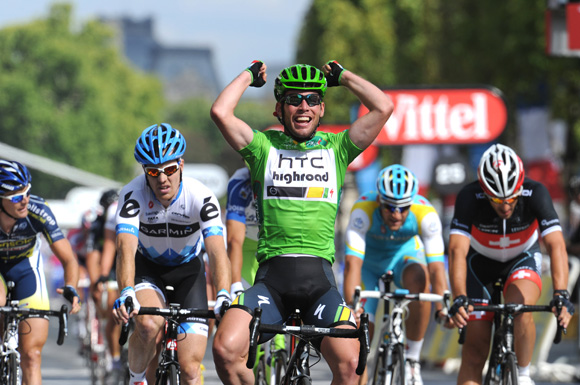
Follow us on Twitter: www.twitter.com/cyclesportmag

Thank you for reading 20 articles this month* Join now for unlimited access
Enjoy your first month for just £1 / $1 / €1
*Read 5 free articles per month without a subscription

Join now for unlimited access
Try first month for just £1 / $1 / €1
Edward Pickering is a writer and journalist, editor of Pro Cycling and previous deputy editor of Cycle Sport. As well as contributing to Cycling Weekly, he has also written for the likes of the New York Times. His book, The Race Against Time, saw him shortlisted for Best New Writer at the British Sports Book Awards. A self-confessed 'fair weather cyclist', Pickering also enjoys running.
-
 'This is the marriage venue, no?': how one rider ran the whole gamut of hallucinations in a single race
'This is the marriage venue, no?': how one rider ran the whole gamut of hallucinations in a single raceKabir Rachure's first RAAM was a crazy experience in more ways than one, he tells Cycling Weekly's Going Long podcast
By James Shrubsall
-
 Full Tour of Britain Women route announced, taking place from North Yorkshire to Glasgow
Full Tour of Britain Women route announced, taking place from North Yorkshire to GlasgowBritish Cycling's Women's WorldTour four-stage race will take place in northern England and Scotland
By Tom Thewlis
-
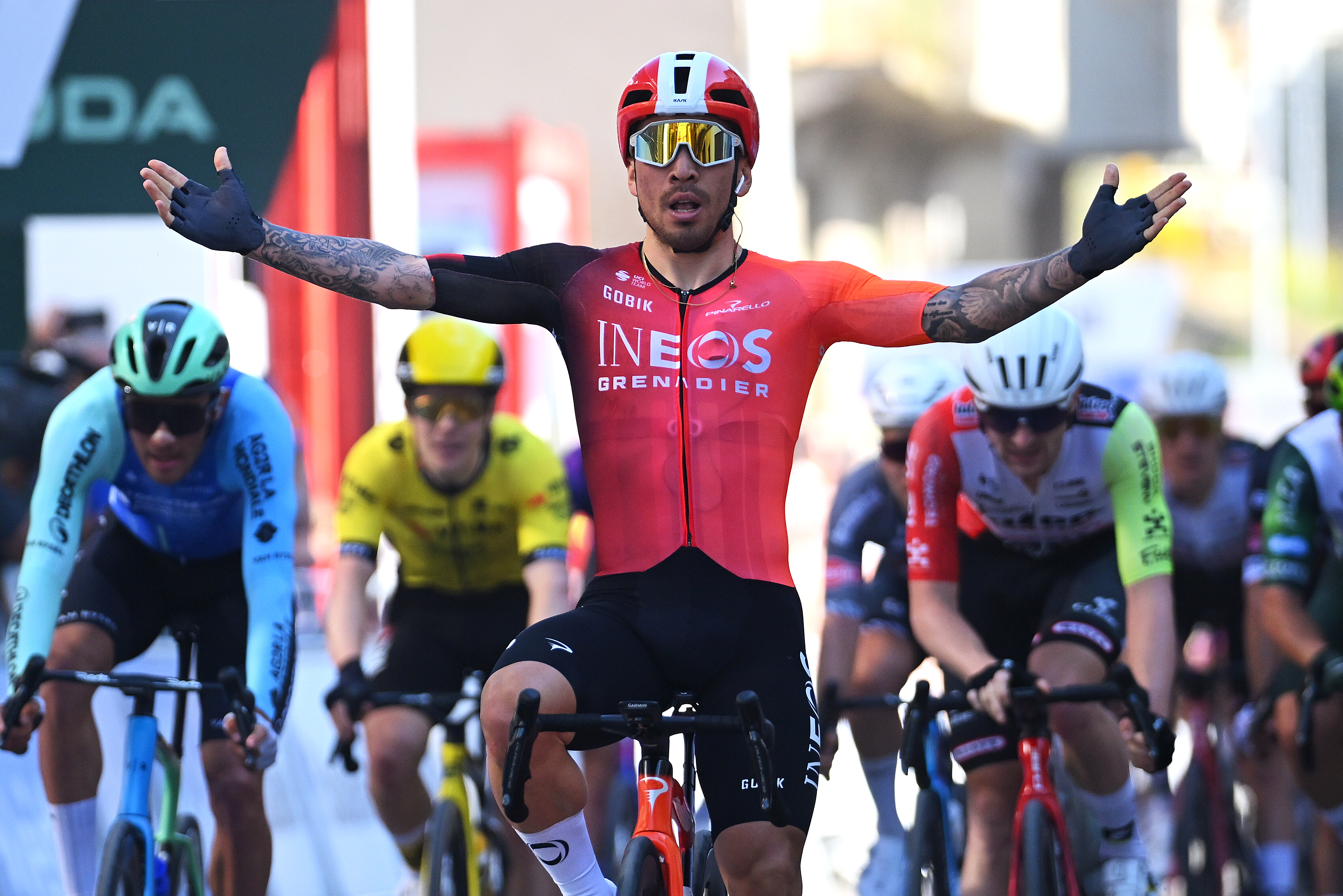 Could Caleb Ewan be Ineos Grenadiers' first Tour de France sprinter since Mark Cavendish? 'That's my goal'
Could Caleb Ewan be Ineos Grenadiers' first Tour de France sprinter since Mark Cavendish? 'That's my goal'"All I can do is try to win as much as possible and prove that I deserve to be there," says Australian
By Tom Davidson
-
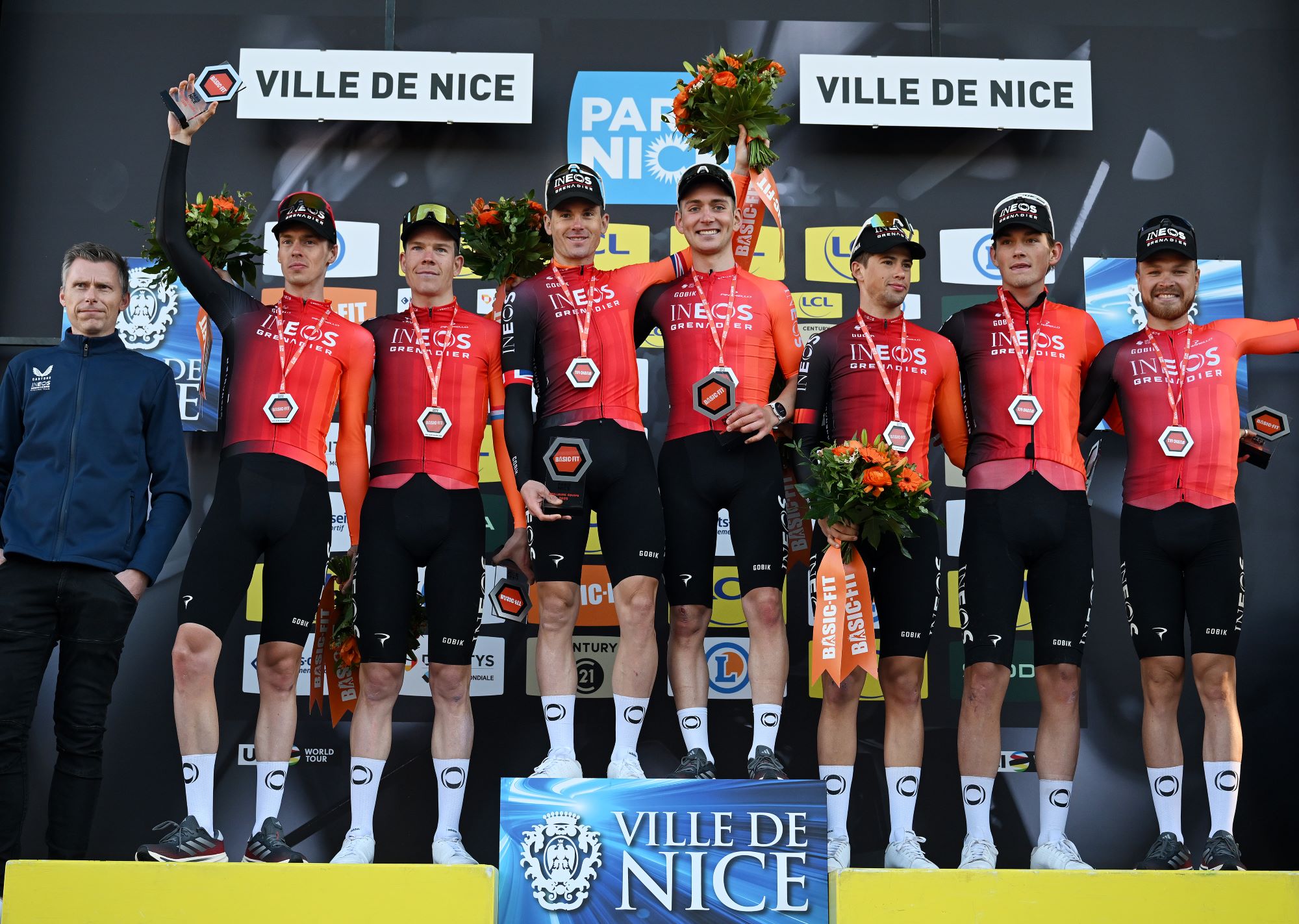 'An unprecedented opportunity for brands to be part of the evolution' - Ineos Grenadiers sponsor hunt steps up with sales agency partnership
'An unprecedented opportunity for brands to be part of the evolution' - Ineos Grenadiers sponsor hunt steps up with sales agency partnershipSportfive have been employed to find "non-endemic global partners for the team"
By Adam Becket
-
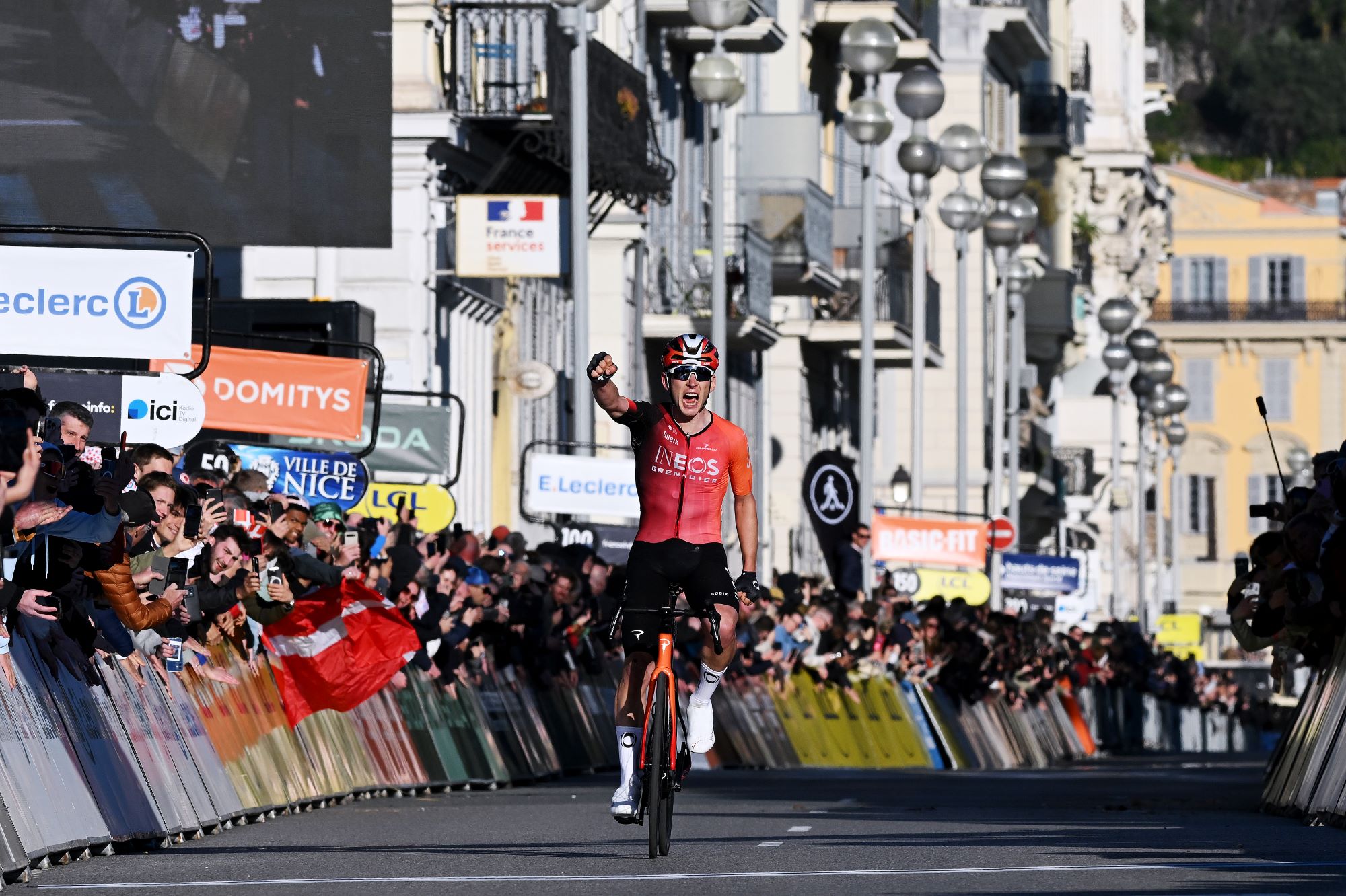 'We've all got a little bit extra in us this year' - Ineos Grenadiers recapture 'fighting spirit' with aggressive Paris-Nice display
'We've all got a little bit extra in us this year' - Ineos Grenadiers recapture 'fighting spirit' with aggressive Paris-Nice displayBritish team continue to put tumultuous 2024 behind them with momentum and a new found mentality
By Tom Thewlis
-
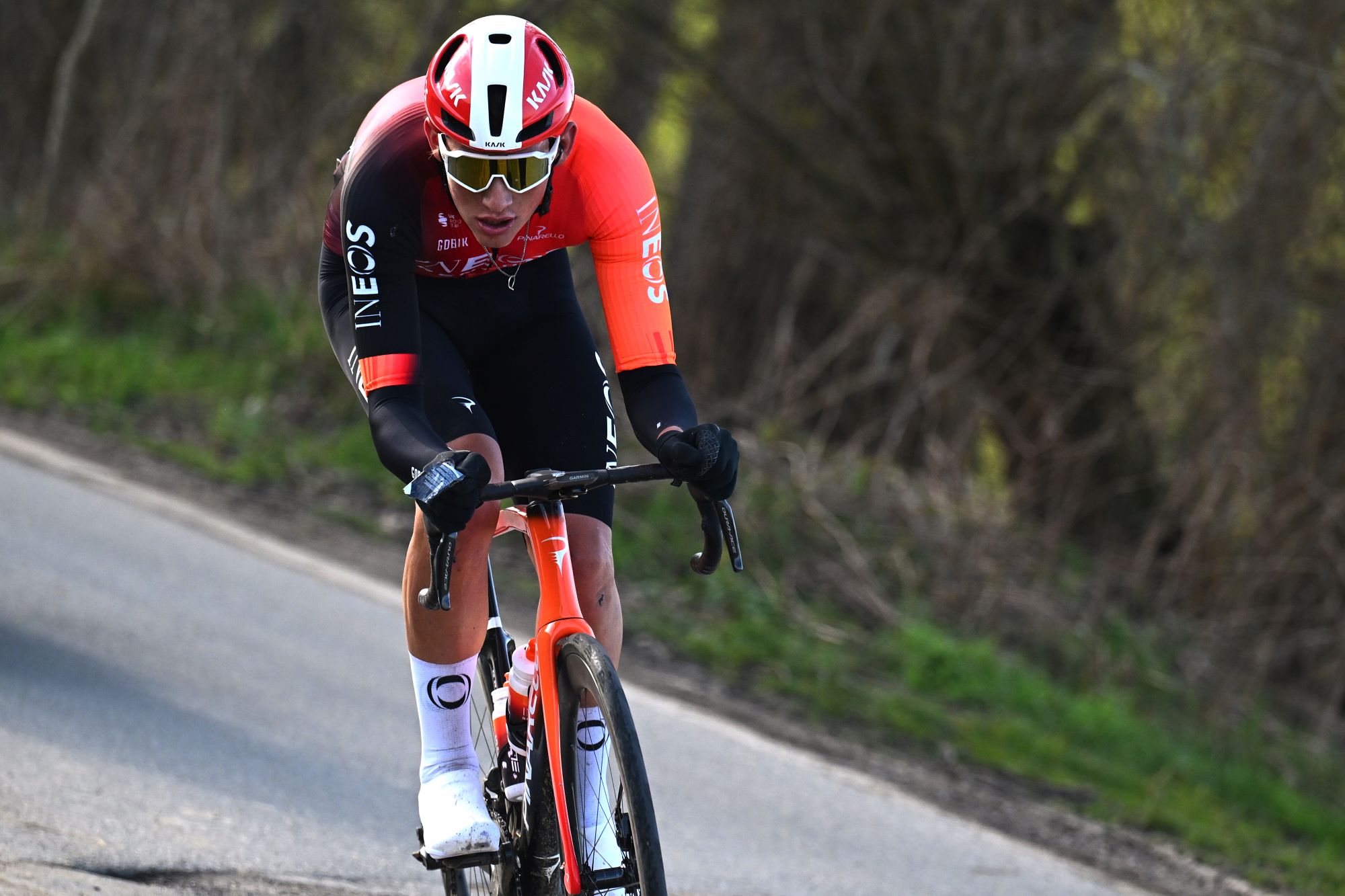 Could a TotalEnergies deal be the end of Ineos Grenadiers as we know them?
Could a TotalEnergies deal be the end of Ineos Grenadiers as we know them?Reports suggested this week that Ineos could be close to signing a deal with the French petrochemical firm
By Tom Thewlis
-
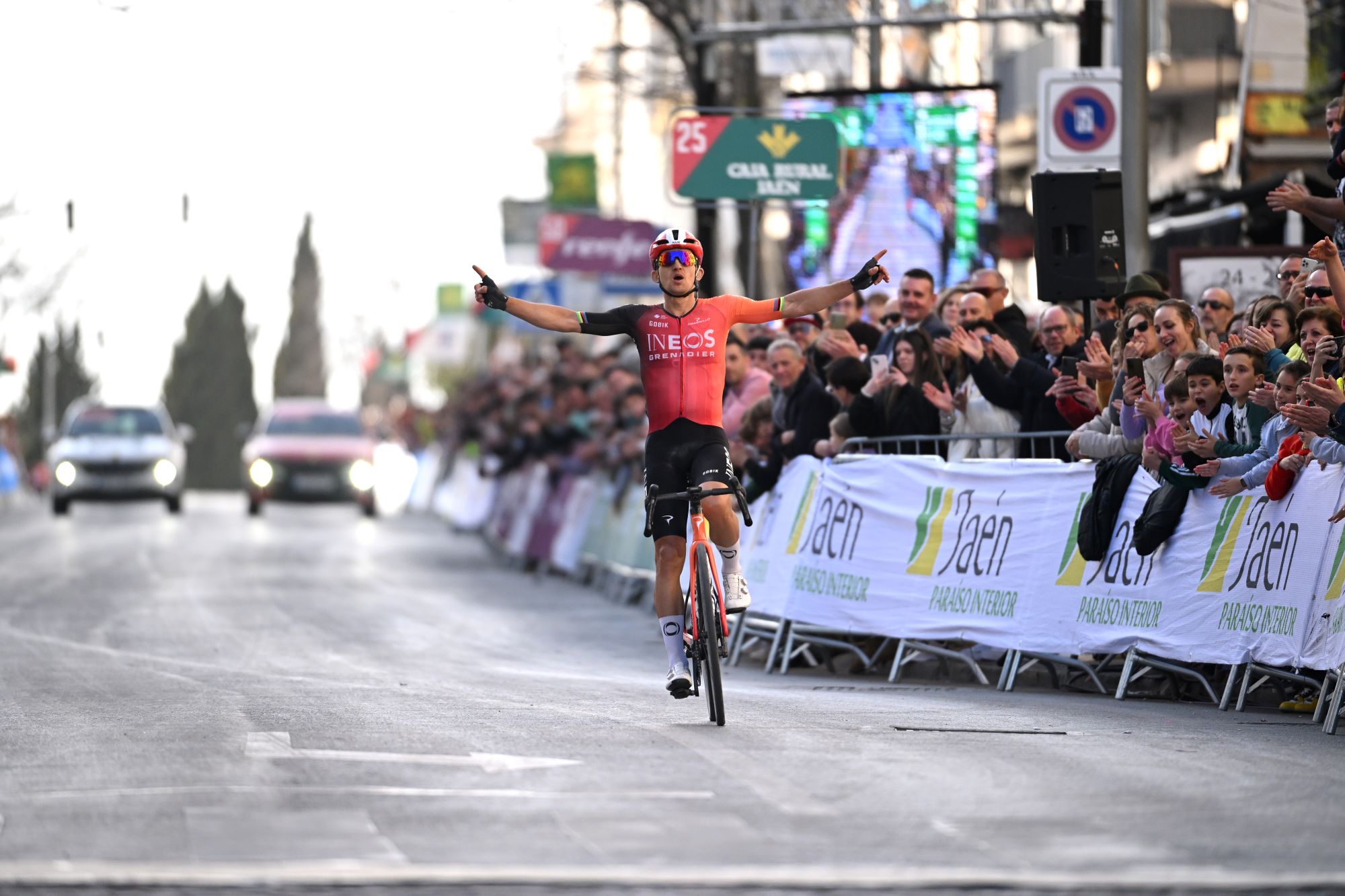 'They’re racing with their hearts again' - Robbie McEwen on Ineos Grenadiers' bright start to 2025
'They’re racing with their hearts again' - Robbie McEwen on Ineos Grenadiers' bright start to 2025The British squad have already won four times in 2025
By Tom Thewlis
-
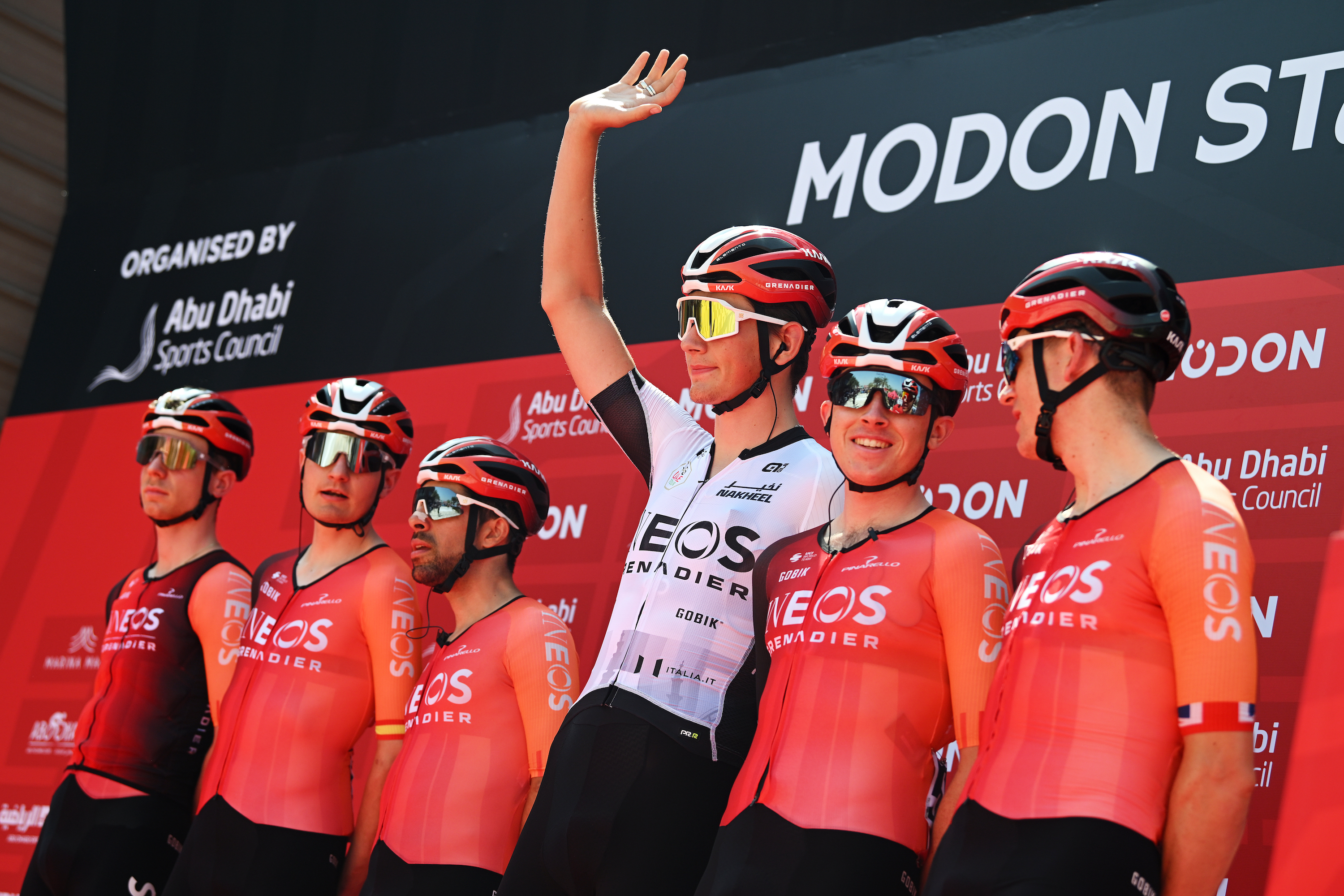 Ineos Grenadiers are entertaining so far this year, but how long will it last?
Ineos Grenadiers are entertaining so far this year, but how long will it last?The British WorldTour squad have won four times already in 2025, but more than that, they have been fun. Is this the new dawn?
By Adam Becket
-
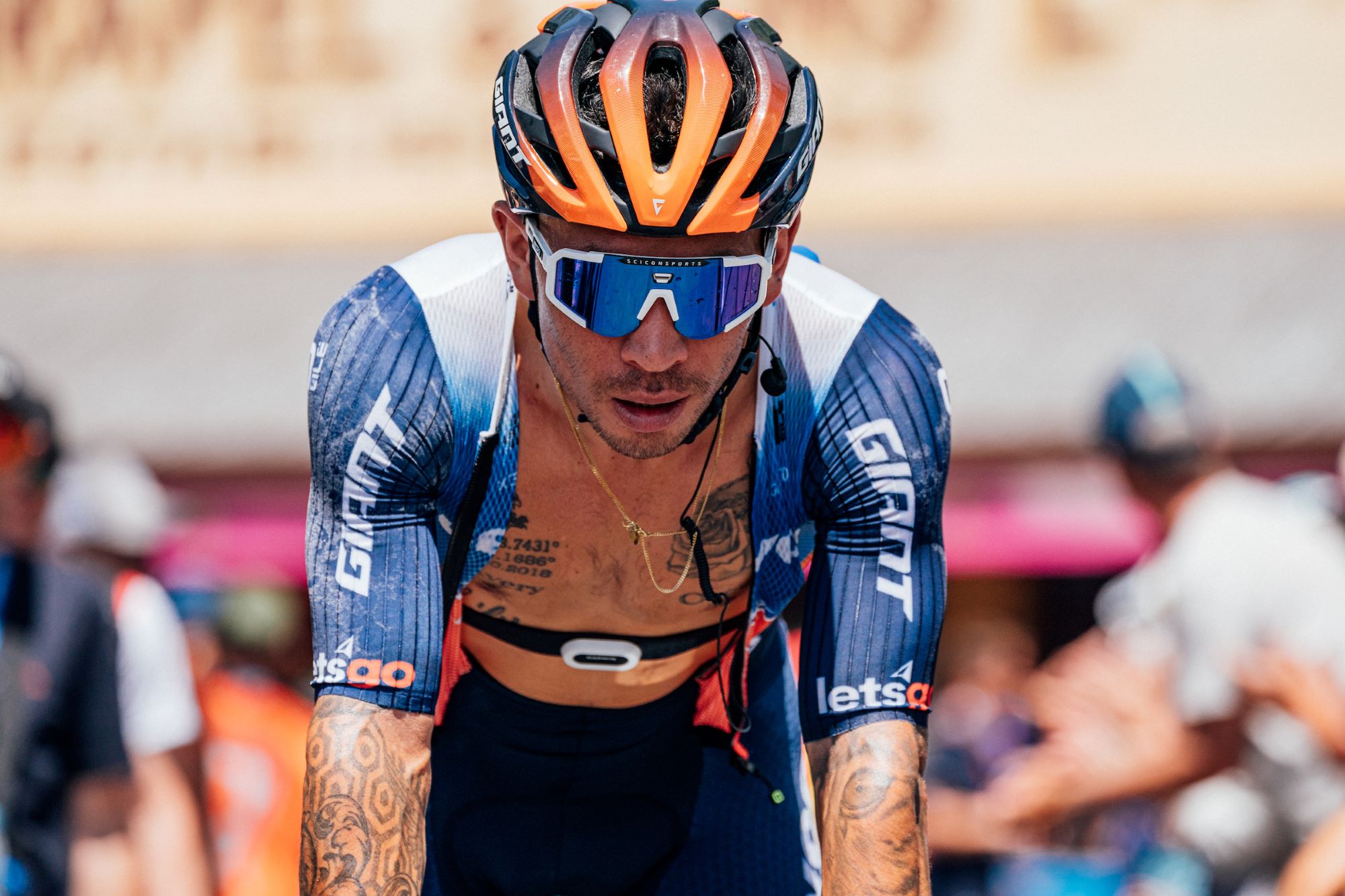 Caleb Ewan says he was put in a 'bad situation' by Jayco AlUla before he joined Ineos Grenadiers
Caleb Ewan says he was put in a 'bad situation' by Jayco AlUla before he joined Ineos GrenadiersEwan joined Ineos Grenadiers in January after spending just one year with Jayco AlUla
By Tom Thewlis
-
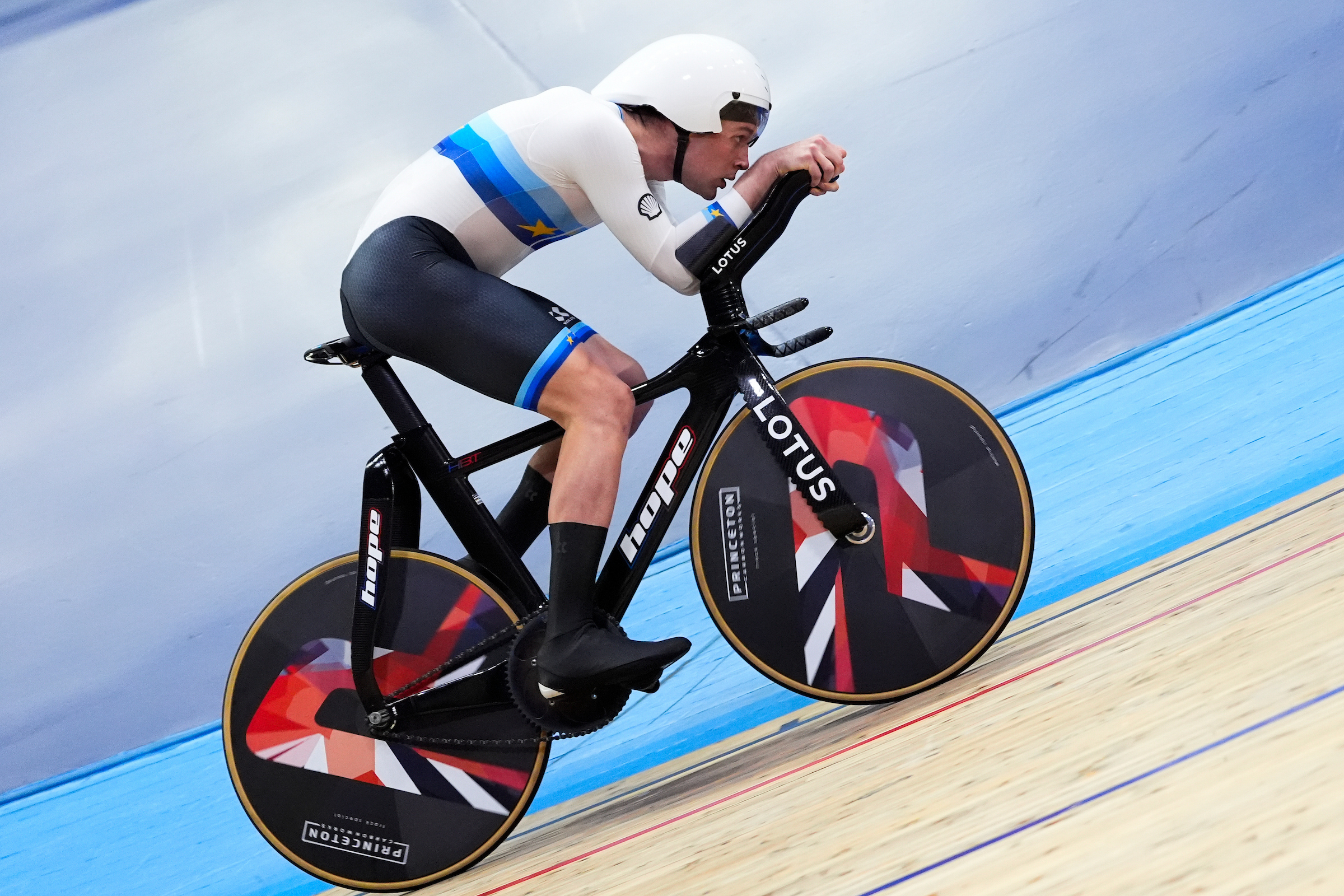 'Five or six WorldTour teams asked for my data' - Interest grows around world record breaker without a road team
'Five or six WorldTour teams asked for my data' - Interest grows around world record breaker without a road teamJosh Charlton says there's "definitely interest" in his signature
By Tom Davidson